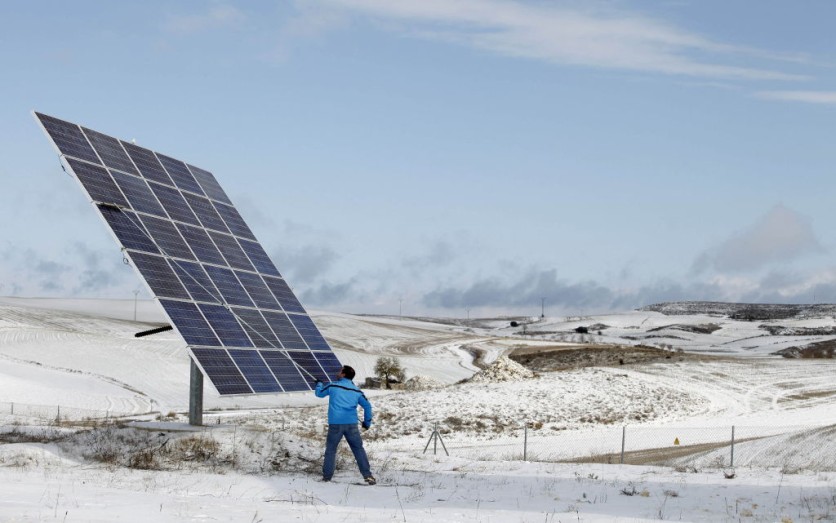In the quest for more efficient solar energy production during winter months, scientists in the United States have introduced a novel concept called "Snow-Free Solar."

Introducing 'Snow-Free Solar'
Researchers at the University of Toledo in Ohio have introduced a pioneering solution known as Snow-Free Solar, designed to effortlessly remove snow from solar panels and ensure their continuous operation during winter.
Their experimentation involved the application of this innovative strip to the lower edge of solar panels and conducting tests with 150 solar plant operators. The outcome revealed that the strip effectively melted snow, all while allowing for the unimpeded absorption of sunlight.
Interesting Engineering reported that Snow-Free Solar is a user-friendly strip that doesn't cast any partial shading or create hot spots on the panels, and crucially, it does not void the module warranty, as emphasized by the creators.
While solar panels can generate electricity even on cloudy days, the challenge arises when snow covers them, completely obstructing their ability to harness solar energy.
In regions experiencing heavy snowfall, this can result in a substantial annual electricity generation loss of up to 12 percent. Moreover, these versatile strips find application with ease, whether on newly installed or existing solar panels.
Hossein Sojoudi, an associate professor in the Department of Mechanical Industrial and Manufacturing Engineering at the University of Toledo, explained that these innovative coatings are skillfully applied to the lower edge of the solar panel.
The Independent reported that this strategic placement allows for a passive snow removal process, all without requiring any additional energy input. Sojoudi further noted that the strip coating harmoniously coexists with the solar panel's core functions, ensuring that it neither obstructs sunlight absorption nor diminishes the panel's efficiency at any stage.
Most notably, it steers clear of causing partial shading or hotspots on the panel and bears no impact on the module warranty. Instead, it contributes to prolonging the module's operational life.
Conducting Tests
Good News Network reported that successful experiments in both the US and Japan have underscored the innovation's potential, revealing an impressive annual boost in power generation exceeding five percent for solar installations that have integrated this technology.
Statistics from the Energy Information Administration paint a picture of solar energy's growing role in the US. Solar power accounted for approximately 3.4 percent of the country's electricity generation the previous year.
However, the future appears increasingly solar-powered, with projections indicating that over half of the new electricity-generating capacity expected in the US in 2023 will be harnessed from solar sources.
Sojoudi strongly emphasized their company's expansion strategy, which revolves around establishing strategic partnerships. Notably, they have showcased their capacity for scalable manufacturing, achieving an impressive monthly production rate of 60,000 strip coatings.
In a proactive move, the company has extended its pilot testing initiatives, forming new collaborations with diverse regions and utility companies. Their goal is to see this technology incorporated into thousands of installations by the close of this year.
Related Article : Switzerland Deploys Massive Solar Dam with 5,000 Solar Panels

ⓒ 2025 TECHTIMES.com All rights reserved. Do not reproduce without permission.




